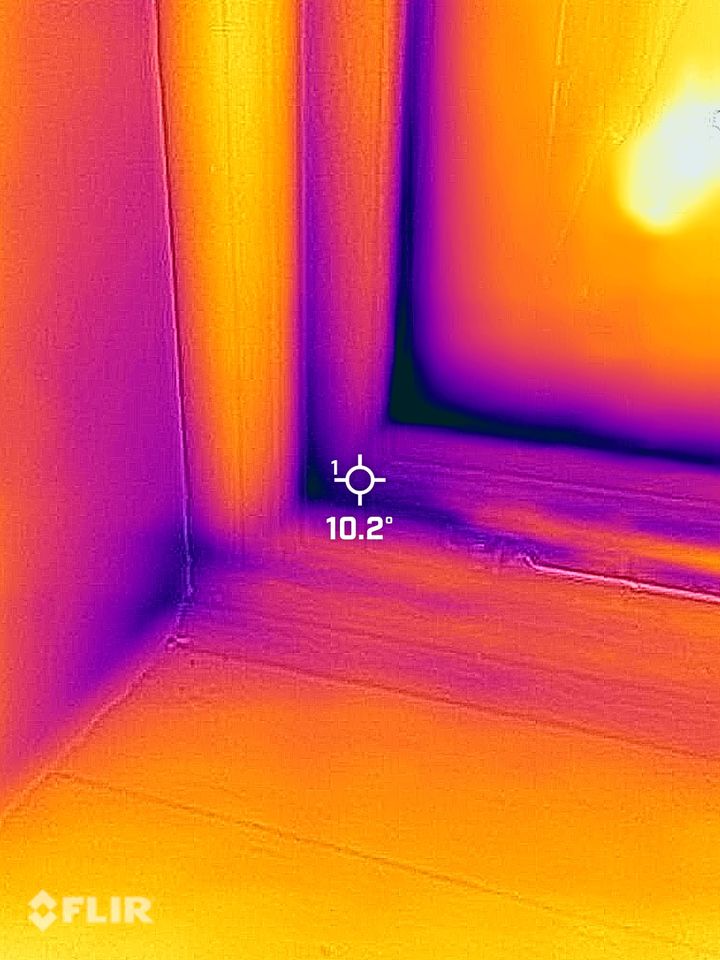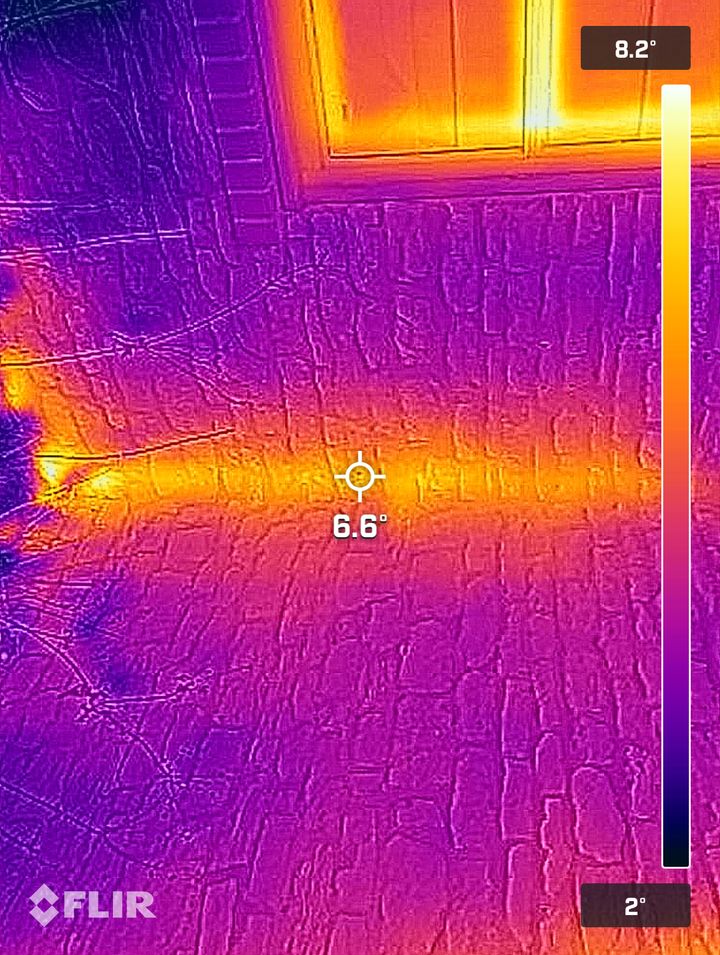Heat loss through windows
Discussion
Our house has double-glazed casement windows installed c.2010
I’m testing out a FLIR camera and seen quite a lot of heat loss from windows, but in the lower corners of the glass, the frame and also in the corners of the reveal
We’ve been thinking about new windows but I don’t know whether there’s scope for improvement in the existing .. does this pattern of heat loss look normal? The inside is about 19c, outside -4 and we get condensation on the inside panes .. why would the corners be so cold compared to the rest of the frame?

I’m testing out a FLIR camera and seen quite a lot of heat loss from windows, but in the lower corners of the glass, the frame and also in the corners of the reveal
We’ve been thinking about new windows but I don’t know whether there’s scope for improvement in the existing .. does this pattern of heat loss look normal? The inside is about 19c, outside -4 and we get condensation on the inside panes .. why would the corners be so cold compared to the rest of the frame?
IR cameras do not directly show where heat is being lost.
It's easy to get a lot of false data because the situation is not 'steady state'.
You may need to interpret the pictures carefully to separate the effects of thermal bridging in the window frames from heat capacity resulting in surface temperatures lagging room temperature and all that.
A few square cm in the corner of a window is not very significant in cooling your whole room, even if it creates an annoying bit of condensation.
It's a tiny bit that's at most 20deg below ambient, a similar bit 20 above ambient would do nothing to keep you warm!
A few sq m that's a couple of degrees 'wrong' is way more significant than a few sq cm that's 10 degrees wrong.
It can be useful to take the camera outside and look at where the heat is leaving the building, but again, this can require care in interpretation, because materials with high heat capacity may be giving off heat they've stored during the day, long into the evening.
You can also get effects like the IR passing through the glass so the camera 'sees' the cold outdoors rather than the warm glass, or low emmisivity surfaces adding a bit of confusion.
Learn by playing?
Some miles on the clock in understanding what the camera is trying to tell you are very valuable. Houses are never perfect, you need to be looking for surprises and abnormalities
It's easy to get a lot of false data because the situation is not 'steady state'.
You may need to interpret the pictures carefully to separate the effects of thermal bridging in the window frames from heat capacity resulting in surface temperatures lagging room temperature and all that.
A few square cm in the corner of a window is not very significant in cooling your whole room, even if it creates an annoying bit of condensation.
It's a tiny bit that's at most 20deg below ambient, a similar bit 20 above ambient would do nothing to keep you warm!
A few sq m that's a couple of degrees 'wrong' is way more significant than a few sq cm that's 10 degrees wrong.
It can be useful to take the camera outside and look at where the heat is leaving the building, but again, this can require care in interpretation, because materials with high heat capacity may be giving off heat they've stored during the day, long into the evening.
You can also get effects like the IR passing through the glass so the camera 'sees' the cold outdoors rather than the warm glass, or low emmisivity surfaces adding a bit of confusion.
Learn by playing?
Some miles on the clock in understanding what the camera is trying to tell you are very valuable. Houses are never perfect, you need to be looking for surprises and abnormalities
It's also still air trapped in the corners, compared with the middle of the pane having airflow over it due to convection.
So the frame is taking less heat out of the room than you'd imagine, because the still air is insulating the boundary to some extent.
That's another reason why it's worth taking the camera outside and looking to see if that bit of frame appears piping hot.
So the frame is taking less heat out of the room than you'd imagine, because the still air is insulating the boundary to some extent.
That's another reason why it's worth taking the camera outside and looking to see if that bit of frame appears piping hot.
Doesn’t appear so - so I guess that’s a good sign

this one’s (another window) a bit odd though! Will be investigating that (device is rotated 90°)

A very useful exercise going outside as it’s indicating some unusual areas of ‘hotness’ in areas i’d never thought of.
Like this - where two original stone walls join in a corner - no pipes nearby or above etc - maybe not as solid as I’d thought (device rotated again)

this one’s (another window) a bit odd though! Will be investigating that (device is rotated 90°)
A very useful exercise going outside as it’s indicating some unusual areas of ‘hotness’ in areas i’d never thought of.
Like this - where two original stone walls join in a corner - no pipes nearby or above etc - maybe not as solid as I’d thought (device rotated again)
Some of that corner warmth could be the walls having been heated by the sun and/or it's (relatively) trapped air in a corner, so cooled less than the rest.
I used to work with someone who really got into this, back when IR sensors were new, expensive and only had a few dozen pixels.
He'd have been out there doing time lapse to work out was was stored heat and using an anemometer to measure the airflow over the wall surface.
You can see things like floor/ceiling voids leaking heat to the walls quite often.
I used to work with someone who really got into this, back when IR sensors were new, expensive and only had a few dozen pixels.
He'd have been out there doing time lapse to work out was was stored heat and using an anemometer to measure the airflow over the wall surface.
You can see things like floor/ceiling voids leaking heat to the walls quite often.
Gassing Station | Homes, Gardens and DIY | Top of Page | What's New | My Stuff



